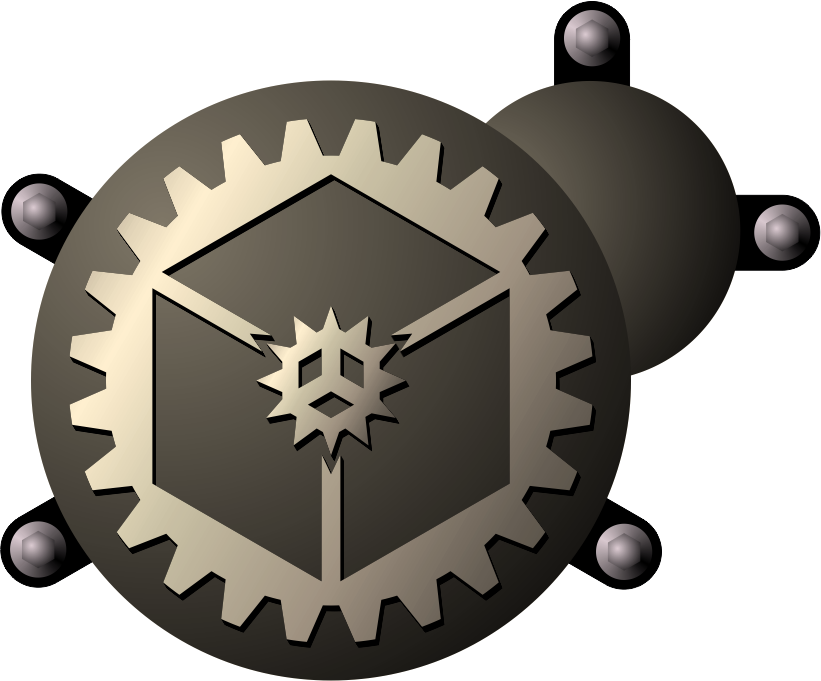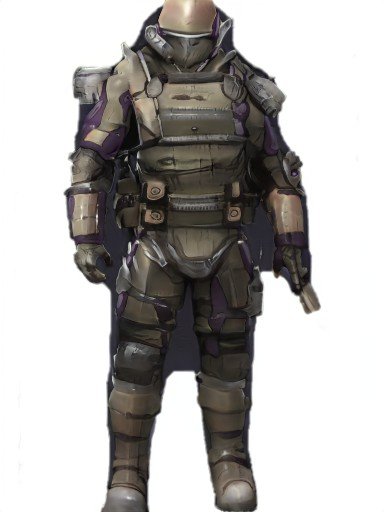Enhanced Prosthesis
Before the dieseltech era, most prosthetics produced beneath the Manifold Sky were uncomplicated replacements for missind body parts using solid materials or, occasionally, simple mechanisms to restore a semblance of normal function. Advances in engineering and metallurgy, however, have opened up the possibility of not merely replacing lost parts but actually enhancing the wearer of prosthetics in the process. In a few cases, individuals have even begun to electively have devices implanted into them or have limbs replaced with artificial ones, though this practice remains extremely rare as of the year 10,000 AR.
Development
One pleasant side effect of the development of endurastahl for dieseltech applications was the discovery that the alloy, resistant to corrosion and decomposition as it is, is also almost entirely biologically innert. This meant that endurastahl anchors and buttresses could be applied to the bones just beyond a stump to create solid bases for external prosthetics, and small mechanical medical devices (such as timed or gesture-triggered auto-injectors) could be coated in the material to prevent rejection. Similarly, as the material allowed for combustion chambers of all types to be significantly reduced in size due to it's durability, endurastahl could be used to incorporate miniaturized dieseltech devices into external prosthetics. This meant that the enhancement mechanics of auto-armor could be applied to such prosthetics, meaning that a wearer could (with the aid of a backpack or other external power source) actually use the limb with greater strength than they originally could with their own flesh-and-blood. True, ongoing enhancement in this manner remains a subject of much research, but those at the cutting edge (or,as some would argue in the case of Dr. Calvin Slaus-Braun, fringe) of the science believe it is only a matter of time before self-contained enhancements fully enter the mainstream.Notable Devices and Developments
- Auto-stilts - Auto-stilts can be affixed to harnesses or exceptionally well-made bone anchor points, granting the wearer enhanced speed and jumping ability. The limitations on this type of device generally involve the structural strength of the user's own bones, requiring significant butressing around the bone and dampening in the device to prevent breakage on impact. Major Johannes Oulfand is a notable recipient of these implants.
- Implanted auto-injectors - Auto-injectors can be used to continually dose a patient with drugs of both the medical (i.e. antibiotics, insulin, and analgesics) and performance-enhancing (i.e. DCStim and other stimulants) varieties. With an endurastahl coating, these can be concealed beneath the flesh. Such implants can also be designed such that they deliver metered doses of drugs on command, with triggers usually rigged to the tendons of the forearm so that a certain 'fretting' gesture on the part of the user can cause a chosen drug to be released into adjacent blood vessels. Vela Shaw is a notable recipient of these implants.
- Auto-armor interface studs - By embedding bone-anchored attachment points and neuroelectric pickups coated in endurastahl into the body, auto-armor operators can be granted a small degree of enhanced control over their suits. This is a relatively new area of research, as the installation of these implants is rather invasive given the medical technology of the time, but participants in these studies report that they feel more 'at one' with their machines when operating them in this manner. The movements of the machine are translated directly into the skeleton and vice versa, reducing the mechanical backlash - and, therefore, increasing the precision of movements - which would otherwise come from a squishy human body nudging the suit threw an intermediary pneumatic layer. Furthermore, with the pickups being hooked up to computerized components integrated into the suit, operators with interface studs can activate certain suit functions without having to move or activate toggles on the suit. Miko Slaus-Braun is currently engaged in this avenue of research, having recently had a small number of studs installed herself for use in her HC-1 "Meantwig" Hazardous Condition Auto-Armor.
Access & Availability
With the War of Reunification producing an excess of individuals looking to both replace lost body parts and to participate in trials for performance-enhancing parts, most government-based health plans in the modern age now cover prosthesis. The Manifold Conservation Society and the Commonwealth of C are both major proponents of these programs, as both are technologically advanced societies with socialized medicine. Many corporate and private plans elsewhere also cover standard prosthesis, with more experimental devices being either available through direct payment to development houses or, more often, being available through research programs on a volunteer basis.
Related Vehicles






Comments